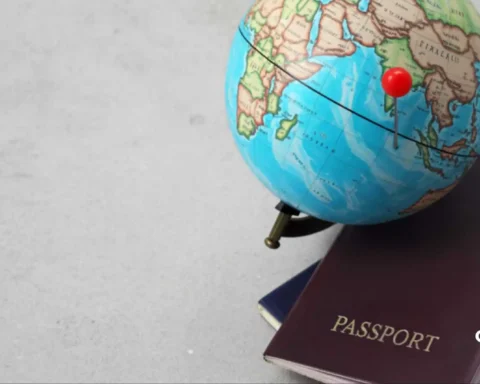Imagine a fisherman in Vanga, once at the mercy of the sea’s unpredictable generosity, now cultivating mangrove forests that not only safeguard his village from raging storms but also provide a steady income through carbon credits. Envision the Hadza hunter-gatherers of Tanzania, whose ancestral lands are no longer just a refuge but are revered as essential carbon reservoirs, as they intertwine their deep-rooted traditions with a growing global movement for climate action.
East Africa’s Kenya and Tanzania are transforming forests into powerful engines of hope and prosperity through carbon projects, transforming the age-old struggle between survival and sustainability. Acacia trees and mangroves along the coast are transforming forests into resilient resources.
These are not just stories of environmental stewardship—they are tales of empowerment, innovation, and resilience. Forest protection is no longer a distant, abstract goal; it is a tangible force reshaping rural lives, fueling education, healthcare, and opportunity. In the shade of these trees, East Africa’s communities are discovering that the path to a greener planet is also the road to a brighter, more equitable future.
Table of Contents
Invest in Carbon Projects: How Forest Protection is Transforming Rural Livelihoods in Kenya and Tanzania
Forest protection through carbon projects is revolutionizing rural livelihoods in Kenya and Tanzania, offering communities a sustainable path to economic development while combating climate change. By linking forest conservation to global carbon markets, these initiatives generate income, restore ecosystems, and empower local residents, especially women and indigenous groups.
Forest Carbon Projects: The Basics
Forest carbon projects preserve forests or restore degraded land, capturing and storing carbon dioxide from the atmosphere. The carbon sequestered is sold as carbon credits on voluntary or compliance markets, with buyers paying for these credits, thereby directing funds to communities that protect forests.
The AFCC supports 22 projects in nine countries.
© TNC
Kenya: Community-Led Conservation and Economic Transformation
In Kenya, several innovative projects illustrate the transformative power of forest carbon initiatives:
The Vanga Blue Forest project in Kenya conserves 460 hectares of mangrove forests, part of a transboundary conservation area with Tanzania. Managed by the Community Forest Association, the project operates a payment for ecosystem services scheme, trading mangrove carbon on the voluntary market. It supports 8,700 locals, many of whom depend on fishing, by providing alternative income streams and funding community programs. Activities include forest health monitoring, restoration, and awareness campaigns.
Over 21,500 smallholder farmers in Embu and Tharaka Nithi counties in eastern Kenya have adopted agroforestry and climate-smart farming, reducing emissions by nearly 25,000 tonnes and generating income through carbon credit sales. Farmers receive 80% of the revenue, which they invest in education, farm expansion, and alternative businesses. The project enhances soil health, improves water retention, and increases crop yields, while also promoting women’s participation in the agricultural sector.

Tanzania: Indigenous Rights and Forest Stewardship
Tanzania’s carbon projects are notable for their focus on indigenous land rights and community governance:
The Hadza tribe in the Yaeda Valley has partnered with Carbon Tanzania to protect their ancestral forests and sell carbon credits. The project has secured land titles for the tribe and neighboring Datoga pastoralists, covering over 590,000 acres. Local youth are employed as scouts to monitor forests and prevent illegal encroachment. The initiative generates hundreds of thousands of dollars annually, supporting education, healthcare, and local infrastructure.
The success of these projects is expanding community-based conservation across Tanzania, with a focus on grasslands and mountain forests to prevent deforestation, protect biodiversity, strengthen community rights, and resist land grabs and environmental degradation.
Broader Benefits and Challenges
Economic Empowerment and Social Change
- Carbon projects provide stable income, reducing dependence on unsustainable resource extraction.
- Women’s involvement in forestry and agroforestry is increasing, promoting gender equality and leadership.
- Carbon revenue-funded community programs that focus on local priorities, including health and education.
Environmental Gains
- Forest protection enhances biodiversity, restores degraded ecosystems, and mitigates climate change.
- Agroforestry enhances soil fertility, water retention, and crop productivity, thereby promoting long-term resilience.
Challenges
- Ensuring that carbon savings are real and not offset by deforestation elsewhere remains a technical hurdle.
- Transparent benefit-sharing and community participation are crucial in preventing past mistakes, such as land dispossession or unequal revenue distribution.
Ongoing Efforts
The current efforts must be understood to pave the way forward.
Transparent Benefit-Sharing and Community Empowerment
Kenya and Tanzania are implementing transparent benefit-sharing mechanisms to ensure local communities, especially indigenous groups and women, receive fair carbon revenue and are empowered as co-stewards of forest resources, with 25% of annual earnings directed to impacted communities.
Strengthening Institutional Frameworks and Legal Reforms
Kenya and Tanzania have introduced legislation like the Climate Change Act and Environmental Management Regulations to improve regulatory oversight and maximize climate finance, enabling the National Carbon Monitoring Center to coordinate carbon trading projects.
Scaling Community-Based Conservation and Participatory Forest Management
Participatory forest management initiatives, such as Vanga Blue Forest and agroforestry programs in Kenya, involve communities in decision-making, monitoring, and enforcement, promoting climate-smart practices and rural incomes.
Enhancing Capacity, Governance, and Safeguards
Tanzania is implementing capacity-building programs to clarify land tenure, formalize customary rights, and rationalize natural resource management, focusing on transparent revenue distribution and integrating social and environmental safeguards to prevent negative impacts.
Regional and International Collaboration
Both countries are collaborating with international donors, NGOs, and technical partners to mobilize funding, share best practices, and harmonize carbon project standards in East Africa.

Transparent Benefit-Sharing
Institutional Frameworks and Legal Reforms
Kenya and Tanzania have established transparent benefit-sharing systems for forest carbon projects, ensuring fair distribution of carbon revenue to local communities. In Kenya, community forest associations allocate funds to education, healthcare, and infrastructure, strengthening local development. Similarly, Tanzania’s governance structures oversee carbon income, supporting community growth and securing land rights, as demonstrated in initiatives with the Hadza tribe in the Yaeda Valley.
Community Participation and Empowerment
Transparent benefit-sharing is linked to community participation, with local residents, including women and indigenous groups, empowered to influence the use of carbon revenue. Kenya’s Vanga Blue Forest project and Tanzania’s Hadza and Datoga communities use carbon revenues to fund education, healthcare, and infrastructure, with local youth acting as forest scouts.
Direct Socio-Economic Benefits
Forest carbon projects in Kenya and Tanzania are enhancing rural communities by investing up to 80% of carbon credit revenue in education, farm improvements, and alternative livelihood opportunities. This not only boosts household incomes but also encourages women’s participation in agriculture and community leadership.
Challenges and Safeguards
Both countries are working to improve transparency and accountability in benefit-sharing mechanisms, addressing challenges such as land dispossession, elite capture, and unequal revenue distribution, while strengthening legal safeguards and clarifying carbon rights.
Way Forward
Kenya and Tanzania are enhancing forest carbon projects, with a focus on community empowerment and environmental impact. They aim for equitable participation, strengthening monitoring systems, and regional cooperation. Investments in capacity building, land rights, and financing can unlock the potential for rural transformation.
Strengthen Legal and Institutional Frameworks
Strengthening legal and institutional frameworks can ensure community rights, transparent benefit-sharing, and clear carbon ownership, while also supporting community governance structures with training and resources.
Scale Up Community Participation and Empowerment
The initiative could aim to enhance leadership in project planning, monitoring, and benefit allocation among women, youth, and indigenous groups through capacity-building programs and inclusive decision-making.
Enhance Monitoring, Reporting, and Verification (MRV) Systems
Implement robust monitoring, reporting, and verification (MRV) technologies, including satellite surveillance and mobile data collection, to precisely measure carbon savings and detect deforestation. Train local community members in forest monitoring and data gathering, equipping them with the skills and tools needed to ensure accurate reporting and strengthen conservation efforts.
Promote Regional Collaboration and Knowledge Exchange
Engage in regional platforms like the East African Community (EAC) and the Alliance on Carbon Markets to harmonize standards and promote market access. Facilitate cross-border conservation projects that yield both ecological and economic benefits.
Secure and Diversify Climate Finance
Secure and diversify climate finance by attracting global investment, developing blended finance models, and combining carbon revenue with grants or microfinance for local enterprises and infrastructure.
Safeguard Land and Resource Rights
The policy aims to expedite land titling and recognition of customary rights, particularly for indigenous and pastoralist communities, and implement grievance mechanisms to prevent land dispossession and elite capture.
Foster Innovation in Sustainable Livelihoods
Promoting sustainable livelihoods through climate-smart agriculture, ecotourism, and value-added forest products, as well as fostering women’s entrepreneurship and leadership in green business initiatives, is crucial.

Conclusion: Legacy of Resilience and Hope
The forests of Kenya and Tanzania, once seen as wilderness, are now recognized as vital assets for climate stability and community prosperity. Through innovative carbon projects, these forests are reviving rural economies and fostering hope in areas where scarcity once existed.
The stories from these regions are not just environmental victories but also stories of empowerment, where local communities reclaim their heritage, women lead restoration efforts, youth become land guardians, and indigenous peoples secure their rights, contributing to a global solution to climate change.
This fusion of conservation and development offers a compelling blueprint for the world: protecting our planet’s lungs can also enrich its heartbeat—its people. As Kenya and Tanzania continue to lead the way, they remind us that the fight against climate change is inextricably linked to the pursuit of social justice. In safeguarding their forests, these communities are cultivating a legacy of resilience and hope that will last for generations to come.









